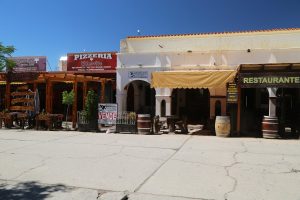
 Spanning some 500 km of mostly dirt roads, the Salta Route of the Wine is roughly triangular in shape. The largest community by far, Salta is on the northernmost point of this ‘triangle’ with tiny towns anchoring the other two points including Cafayate and Molinos. Our drive of this route begin in Salta >> Cafayate >> Molinos/Bodega Colome >> back to Salta. Allow at least 5 to 7 days.
Spanning some 500 km of mostly dirt roads, the Salta Route of the Wine is roughly triangular in shape. The largest community by far, Salta is on the northernmost point of this ‘triangle’ with tiny towns anchoring the other two points including Cafayate and Molinos. Our drive of this route begin in Salta >> Cafayate >> Molinos/Bodega Colome >> back to Salta. Allow at least 5 to 7 days.
Start your epic wine journey in Salta – rent a car at the tiny easy to navigate Salta airport (SLA) – nonstop flights from Mendoza or Buenos Aires). Be sure to also turn your headlights on during the day. Driving straight from Salta to Cafayate is around 3 hours but like anywhere along the Salta Wine Route, times will take longer – there are simply to many distractions and places to stop along the way.
One of the region’s most hospitable and charming towns, Cafayate is located at about 5,500 feet above sea level, centered around a public square plaza containing boutique shops selling jewelry, art and other artisan crafts, restaurants, a few wine shops/tasting rooms, old men and women sitting on park benches, children playing and on one side of the plaza the impressive Our Lady of Rosary Cathedral. During one of our stops here an old man was bicycling a cart of young grape vines through the plaza. The pace of life seems to be slower – there is no rush, use a stay in Cafayate to re-calibrate, recharge and to clear the mind while enjoying the culinary offerings and wines of the region.

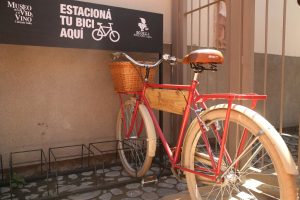 The Museo de la Vid y el Vino is highly worth a visit for any wine enthusiast. Focusing on the wines of Salta the museum highlights the history of the region including the first French varietals, Malbec and Tannat which were initially introduced to the region in the 1800s. The white variety, Torrontes is also very popular – a variety native to Argentina resulting from the cross between Muscat of Alexandria and Mission. And other highlights of the museum include numerous wine making artifacts and tools. And some of these wines can be tasted at the tasting room on the lower floor in the center of the museum along with select other wines from the region.
The Museo de la Vid y el Vino is highly worth a visit for any wine enthusiast. Focusing on the wines of Salta the museum highlights the history of the region including the first French varietals, Malbec and Tannat which were initially introduced to the region in the 1800s. The white variety, Torrontes is also very popular – a variety native to Argentina resulting from the cross between Muscat of Alexandria and Mission. And other highlights of the museum include numerous wine making artifacts and tools. And some of these wines can be tasted at the tasting room on the lower floor in the center of the museum along with select other wines from the region.
Accommodation ranges from hostels to luxury resorts. For the budget conscious traveler who values privacy consider staying at one of several cottages at Shamballa, located about 10 minutes outside of downtown Cafayate. Each cottage features plenty of space; Shamballa is situated among a very quiet and picturesque setting – a small pool is also located on site. And for dining, check out one of the best restaurant scenes in town, Pacha cocina de autor. And there are plenty of wineries within a short drive of Cafayate – some require appointments and some do not.
Bodega Amalaya is located only a few minutes drive from the central plaza in Cafayate. In 2020 a visitor center opened to showcase the Alamaya wines. The hospitality center accepts both walk-in visits and experiences only available by reservation. While historically the Alamaya wines have been distributed – select single varietal limited production wines are only available to taste and purchase through visits to the winery.
The name Alamaya translates to ‘hoping for a miracle’ (in Spanish, the line esperanza for un milagro appears on all the bottles) and the circular image representing their brand represents the circle of life – especially as it relates to seasonal changes in the vineyard. A large stone representation of the brand is located just below the visitor center.
Especially worth visiting are the friendly folks at the family-owned winery Burbujas de Altura, a small producer with a tasting room almost next to the side of the road about a 10 minute drive from Cafayate. Fairly new to the tasting scene, they opened in April 2019 – although the family has owned their vineyard here for years. They produce limited production still wines but most intriguing is the 100% Torrontés Sparkling Wine, the first of its kind from the region. The tasting room is upstairs – ask to see the cellar, built into the ground below the tasting room.
And continuing on to the town of Molinos and then Estancia Colomé – the road becomes dirt a short ways outside of Cafayate – and runs through some gorgeous high desert scenery at times.
Hotel Estancia, Colomé
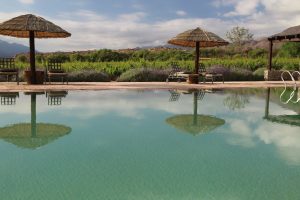
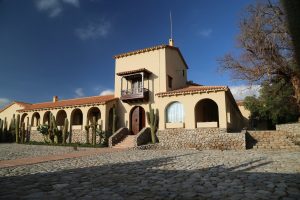 Located about 4 hours from Cafayate is this luxurious and remote resort and winery. Featuring only 9 suites, a stay here is both an intimate one (from the lack of neighboring guests) as well as highly personalized with very friendly and attentive staff. The sizable rooms are situated around a Spanish style courtyard – each comes with an outdoor terrace. There are no bad views here – just views from different perspectives.
Located about 4 hours from Cafayate is this luxurious and remote resort and winery. Featuring only 9 suites, a stay here is both an intimate one (from the lack of neighboring guests) as well as highly personalized with very friendly and attentive staff. The sizable rooms are situated around a Spanish style courtyard – each comes with an outdoor terrace. There are no bad views here – just views from different perspectives.
The views from the pool are especially memorable – with panoramic vistas spanning parts of the valley and the Andes – overlooking both small fields of lavender and vines.
The small restaurant serves both lunch at dinner – specializing in traditional Argentina cuisine. Breakfast is included with every stay. It is really remarkable to have built and to maintain a luxurious resort in such a remote location.
Winery and Visitor Center
The winery and visitor center is Within a 5-7 minute walk of the hotel. Guided tours are by appointment and highlight the history of both the Davalo and current owners, the Hess family followed by a short tour inside the winery and barrel room. This state-of-the art winery was finished in 2009.
A tour is followed by a tasting, either at the bar inside the visitor center (next to a small gift shop) or at small tables outside on the terrace overlooking parts of the vineyard. Usually 3 to 4 wines are provided for tasting.
The original winery building (the oldest existing winery building in Argentina) is located to the left of the main entrance of Hotel Estancia. In really bad shape around the turn of the century, this building has since been carefully restored. The building is located in its original footprint – the only more modern addition is the location of the stairs leading up to the second floor. The building was built primarily using homemade adobe bricks (one can still see pieces of straw in these bricks). It is not open to guests.
James Turrell Museum

 The museum opened in 2009 and remains the only museum in the world dedicated to his art. Turrell helped design the layout of the museum which contains 9 separate exhibit rooms featuring select works from over five decades throughout his professional career. Tours are by appointment – available only to the guests of Hotel Estancia and are always guided with tours available in either English or Spanish. Visitors enter the museum by walking through a small demonstration vineyard planted to a number of varieties.
The museum opened in 2009 and remains the only museum in the world dedicated to his art. Turrell helped design the layout of the museum which contains 9 separate exhibit rooms featuring select works from over five decades throughout his professional career. Tours are by appointment – available only to the guests of Hotel Estancia and are always guided with tours available in either English or Spanish. Visitors enter the museum by walking through a small demonstration vineyard planted to a number of varieties.
James Turrell is a Los Angeles based artist who is most known for his works with space and light, he has created select framed works of art (some of which are displayed in the main lobby). His works are experiential – one can easily ‘lose’ oneself in some of the exhibits. One such exhibit is the walk of colors – as one walks the color of light changes – without any sharp edges in corridor one can lose their sense of place and be mesmerized by a certain timelessness that exists in this particular exhibit.
Another highlight is the ‘black stairs/blue screen’ – not what it initially looks like – as one walks closer, one sees a large room at the top of the black stops. Walking towards the blue, eventually one must stop as the floor drops off while the blue light persists – again one becomes ‘lost’ in the continuation of the light.
And if one visits the museum before sunset, the final exhibit is perhaps the most fascinating. Visitors enter a room that looks like a mosque with a square opening in the roof – and then lie face up on the provided rugs and pillows and watch the changing sky as it darkens. Best experienced with clouds – the interior lighting will change as the light from the sun dims. Initially the lighting changes gradually but by sunset as the sky darkens quickly the colors of the interior lighting become more dramatic.
When visitors are ready to leave this world-class museum, one might expect to step out into a big city surrounded by traffic, tall buildings and other trappings of urban life. Simply because no museum of this stature would ever be in a remote location like this. So its a little bit of an incongruous feeling when departing the museum and immediately finding oneself surrounded by vineyards, the Andes mountains and if clear, brightly shining stars that would never be this bright if one was in a city.




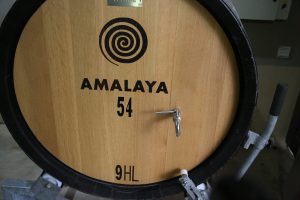
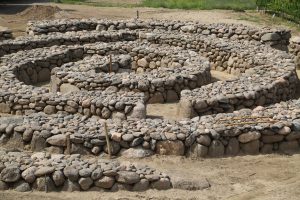
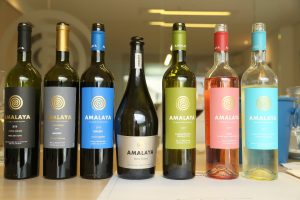
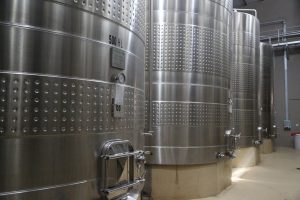


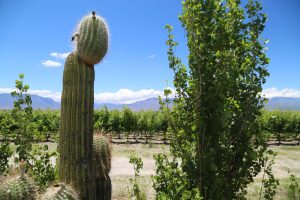

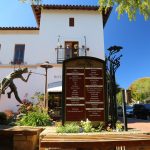

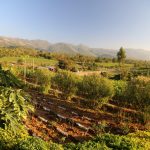
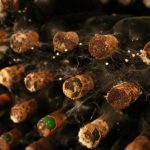
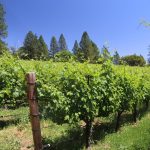
Editing through this article makes me want to return asap!
me too